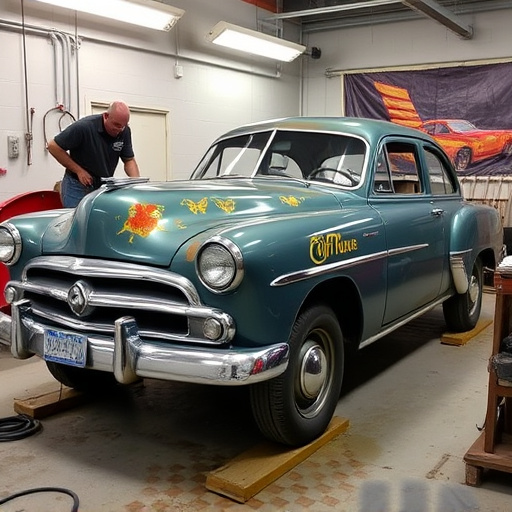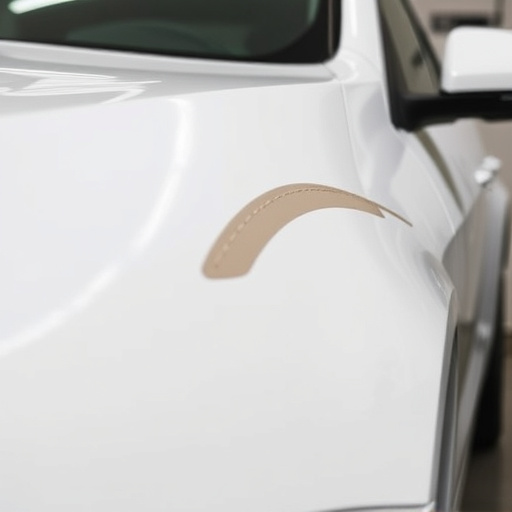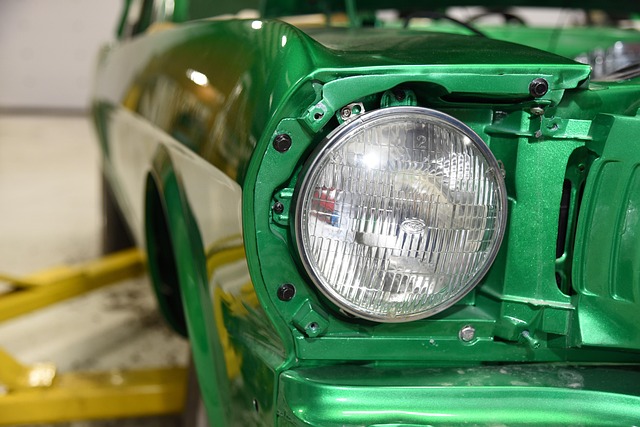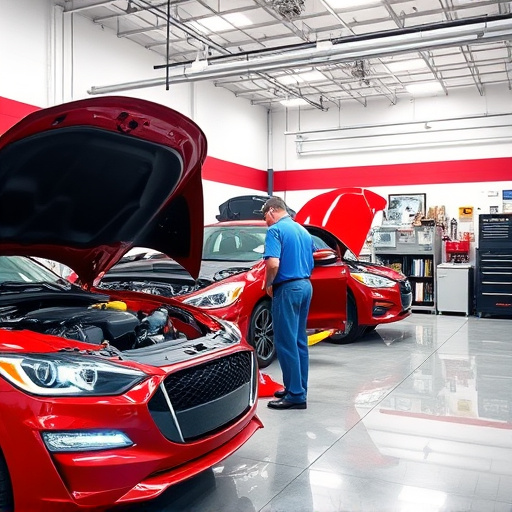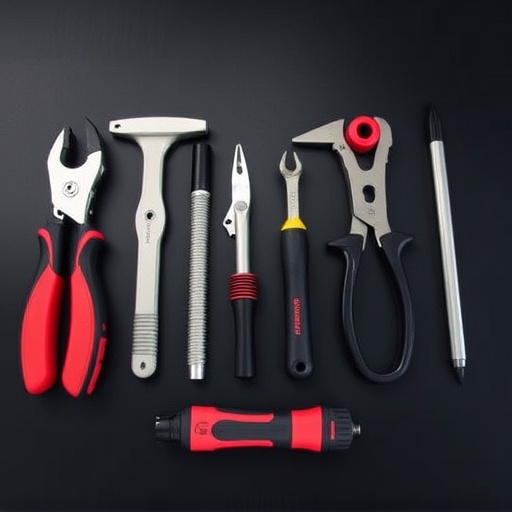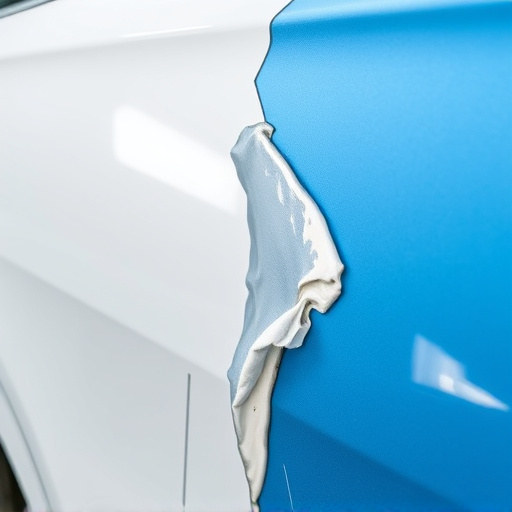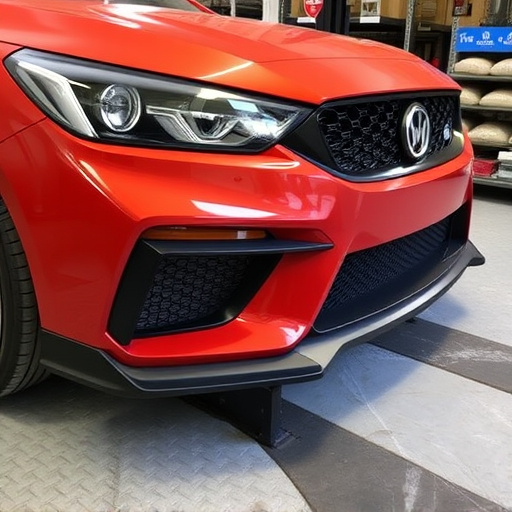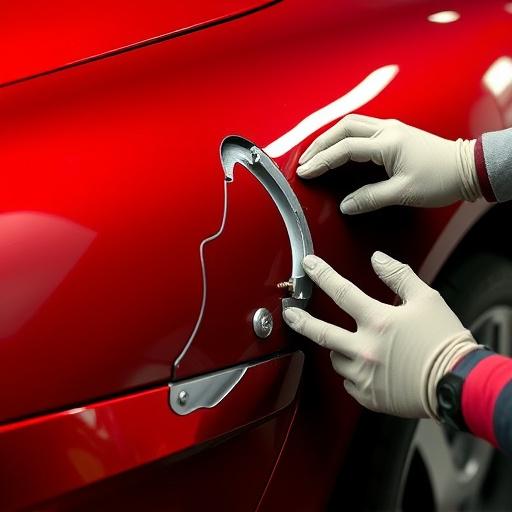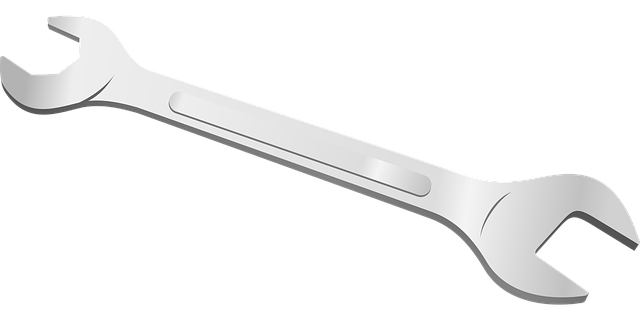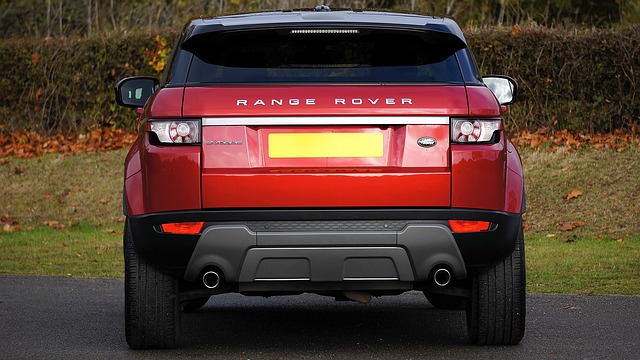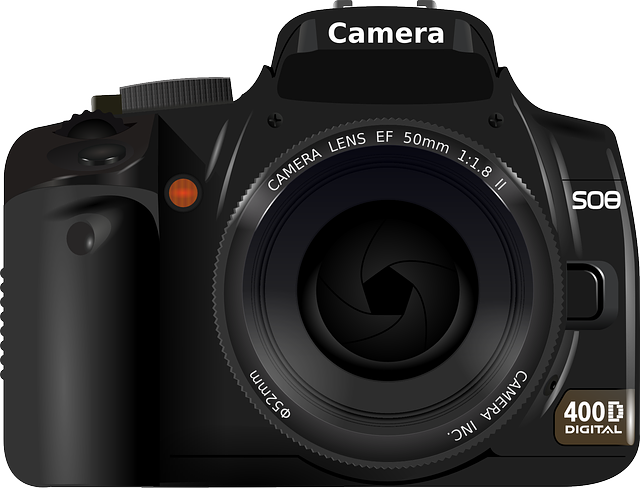Bumper scuff repairs are crucial for maintaining vehicle aesthetics and resale value, addressing minor dents and scratches that significantly impact a car's appearance. Professionals use advanced tools like precision scrapers, sanders, and paint matching technologies to expertly restore bumpers. This involves removing damage, smoothing surfaces, and applying matched car paint for a seamless finish. Specialized composite fillers, high-performance adhesives, and protective gear further enhance repair outcomes. Specialized tools offer superior results over general equipment due to precise design tailored for modern vehicle bumpers, streamlining the process and minimizing errors.
Bumper scuff repairs are a common issue for vehicle owners, but it’s the skilled technicians and their professional tools that truly make the difference. This article delves into the world of bumper scuff repairs, exploring how specialized tools are indispensable in achieving precision and flawless results. We’ll uncover the various types of equipment used, highlighting their benefits and best practices for effective bumper scuff restoration. Understanding these techniques ensures your car’s exterior looks as good as new.
- Understanding Bumper Scuff Repairs: The Role of Professional Tools
- Types of Professional Tools Used in Bumper Scuff Repair
- Benefits and Best Practices for Employing Specialized Tools
Understanding Bumper Scuff Repairs: The Role of Professional Tools
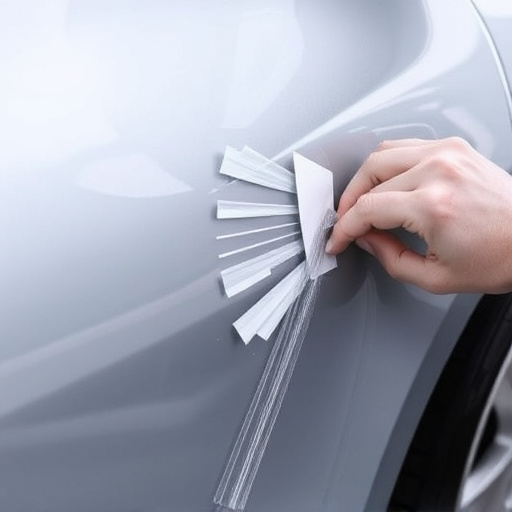
Bumper scuff repairs are a specialized task that requires precision and the right tools to achieve a flawless finish. These minor dents and scratches on bumpers can significantly impact a vehicle’s appearance, especially in today’s competitive automotive market where first impressions matter. Professional bumper scuff repair technicians utilize advanced tools designed specifically for such delicate auto body work.
The process involves a combination of specialized equipment, including precision scrapers, sanders, and paint matching technologies. Auto dent repair experts use these tools to carefully remove the damaged area, smoothen the surface, and then expertly apply car paint services to match the bumper’s original color, ensuring a seamless and invisible repair. This level of expertise is crucial in maintaining the vehicle’s overall aesthetics and resale value.
Types of Professional Tools Used in Bumper Scuff Repair
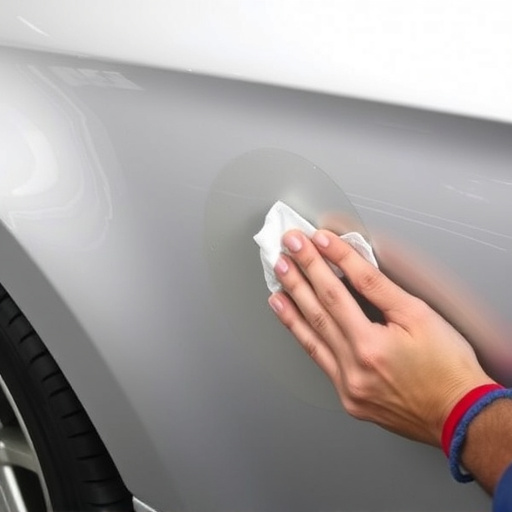
In the realm of bumper scuff repair, technicians leverage a diverse array of professional tools designed to expertly address various damage types. These include specialized scrapers and buffers that delicately remove surface imperfections while preserving the car’s finish. Advanced sandpaper varieties with precise grit levels enable meticulous smoothing of scuff marks, ensuring a seamless transition between repaired and original panels.
Beyond mechanical tools, modern bumper scuff repair also incorporates innovative products such as composite fillers and high-performance adhesives. Composite fillers, composed of durable materials like polypropylene or fiberglass, are used to fill deep scratches or dents, offering both structural integrity and aesthetic restoration. Adhesives specifically formulated for automotive applications ensure robust bonding between repaired components, facilitating efficient bumper repair and enhancing the overall durability of car repair services. These professional tools collectively empower technicians to deliver top-notch car dent repair outcomes, revitalizing vehicles’ external aesthetics with precision and care.
Benefits and Best Practices for Employing Specialized Tools
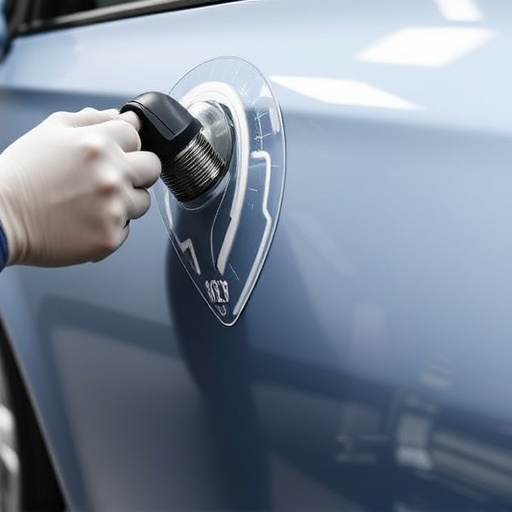
Specialized tools designed for bumper scuff repair offer several significant benefits over general-purpose equipment. Firstly, they are tailored to handle the precise contours and materials of modern vehicle bumpers, ensuring cleaner, more accurate repairs that blend seamlessly with the original factory finish. This precision is crucial in maintaining the aesthetic integrity of the vehicle body, especially on high-end models known for their intricate designs.
Employing these professional tools also streamlines the repair process, reducing the time and labor typically associated with bumper scuff damage. Techniques like paintless dent repair, facilitated by specialized tools, avoid the need for extensive sanding, painting, and refinishing often required in traditional auto dent repair methods. This not only enhances efficiency but also minimizes the risk of overspray and other mistakes that can lead to costly touch-up work. Best practices include regularly calibrating and maintaining these tools to ensure optimal performance, using protective gear during repairs to prevent damage to both the technician and the vehicle, and adhering to manufacturer guidelines for specific bumper scuff repair techniques.
Bumper scuff repairs require specialized tools to achieve professional, seamless results. By employing these advanced tools, technicians can efficiently restore damaged bumpers to their original condition, ensuring vehicles maintain their aesthetic appeal and value. Investing in high-quality equipment and adhering to best practices is key to delivering exceptional bumper scuff repair services that meet customer expectations in today’s competitive automotive industry.
